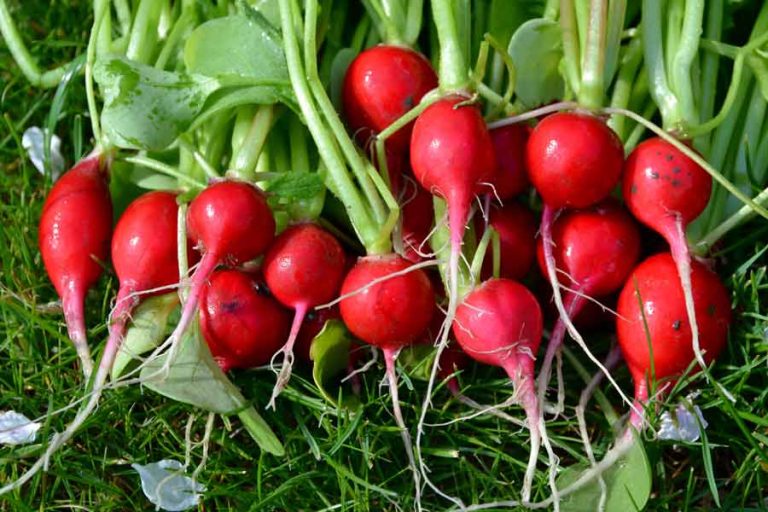Fresh vegetables in the dark winter when supplies from the garden are dwindling and colds are on the rise? How do we save the harvest surpluses in this time? In addition to preserving, drying and freezing, we have (re)discovered fermentation and would like to invite you into the world of sparkling, spicy and crispy fresh vegetables from the jar.
The process of “living preservation” through fermentation is uncomplicated, resource-saving and the result is always a tasty, crispy, fresh surprise. The advantage for your health: The fermentation creates healthy lactic acid bacteria, which offer a cure for the intestinal flora and thus strengthen your immune system.
What is fermentation and what foods are fermented?

What sauerkraut is to the Germans, kimchi to the Koreans, soy sauce to the Japanese, kefir to the Russians and surströmming, which smells unpleasant to our noses, to the Swedes – all these products are fermented foods.
Fermentation refers to the microbial conversion of organic substances by probiotic bacteria and fungi. Acid, gases or alcohol are produced during this natural process.
Buy fermented products or make them yourself?
Many industrially fermented foods are pasteurized after the fermentation process, i.e. heated to high temperatures. This pasteurization enables a hygienically and tastefully standardized process.
What is practical and efficient for industrial processing, however, also destroys beneficial bacteria produced during fermentation, including cultures of lactic acid bacteria that can be beneficial for your intestinal flora.
When you make your own fermented vegetables (also called ferments), you can be sure that nutrients, enzymes and lactic acid bacteria will be preserved. You can vary your fermented vegetables with many different spices and herbs and thus have a new taste variation in the glass every time.
The own fermentation of vegetables brings you a spicy variety on your plate and is worth trying out!
The advantages of fermentation at a glance
It promotes a favorable intestinal flora through the proliferation of healthy intestinal bacteria. This improves digestion and absorption of nutrients.
During fermentation, vitamins are created that are only found in a few non-fermented foods. Among them the important vitamin K. This vitamin is essential for your bone and heart health. It also has a reputation for preventing some types of cancer.
A good three quarters of the immune system takes place in the intestines. They strengthen the immune system. If the intestinal flora is weak, the susceptibility to various diseases increases.
The wild fermentation
Fermenting vegetables at home is called wild fermentation. You can compare the fermentation with a cure for your vegetables. The vegetables enjoy a bubbling salt bath for a few days and emerge strengthened. In the wild fermentation of vegetables, you take advantage of naturally occurring bacteria. These are mainly found on the (organic) vegetables themselves or have previously come into contact with the vegetables through the air, soil, water or your hands.
The right accessories for fermentation
You only need a few accessories to ferment your vegetables. In addition to your favorite vegetables, the most important utensils and ingredients are:
Salt
Glasses or other suitable vessels
pounder
weights / smaller glasses
grater
The best vegetables to ferment
The best veggies to ferment are clearly your favorite veggies! Through the fermentation you will rediscover this taste in a completely new way. Organically grown vegetables are particularly suitable for fermentation, because the low level of treatment with pesticides and fungicides results in fewer pollutants but a greater variety of microorganisms.
Classic vegetables for fermenting are cabbage such as red or white cabbage, but also carrots, beetroot and radishes. Vegetables with a high water content such as tomatoes, cucumbers or lettuce can also be fermented, but they quickly become very soft as a result of the fermentation – it is important to explore your own taste there.
The fermentation process depends on the size of the pieces and the water content of the vegetables, as well as the salt content and the ambient temperature.
Salt when fermenting

The vegetables are either whole or chopped up in a jar and covered with salt. The vegetables are now swimming in a salty environment that is as airtight as possible. Many bacteria that are naturally found on the vegetables cannot survive in this and their growth is restricted. Others, such as the lactic acid bacteria, which are beneficial for us humans, begin to live and multiply in this salt water. The breakdown of macronutrients creates acids, which you can perceive as a sour taste and smell.
A salinity of 2% is ideal for wild fermentation. For example, 1 kilogram of cabbage requires around 20 grams of salt to ferment.



